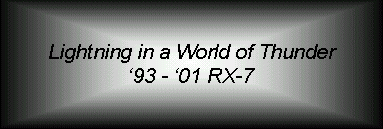

Date: Fri, 1 May 1998 09:00:35 -0700 Actually the TIG welders I have seen feeds the wire the same as a MIG
welder. The only difference is the Argon gas (it's actually a mixture of
gasses, but I'm not sure what) that the MIG welder uses to make a cleaner
weld. It envelops the area you are welding with inflammable gas and the
resultant weld is much purer and stronger. In fact the MIG welder my
father owns was originally a TIG welder until he purchased the Argon gas
tank and regulator to attach it to the welder.
The type of welder that uses rods is called an Arc welder (torh welders
also use rods). Technically a TIG and MIG welder is the same basic
principle (electrical welders), but they are much more versitile and use
the gases to make a more pure weld (no cabon content).
Lincon makes many MIG and TIG welders, but they are not very well
constructed. Ask your local welding supply shop for their reccomendations.
We are using a Miller Millematic 130. It takes only 110 V AC instead of
220.
Unfortunatly the cost of a MIG or TIG welder is pretty high... $500-$1000+
(including the tank and regulator) from what I have seen. I think we paid
near $600 for the Miller and accessories.
______________
Date: Fri, 1 May 1998 11:04:55 -0600 TIG (Tungsten Inert Gas) uses a Tungsten electrode and a hand-held
or externally-fed rod. TIG can be used on just about any material
including chrome-moly steel, aluminum, and magnesium (with the right
setup; don't try this at home).
MIG (Metal Inert Gas) uses
a spool-fed welding wire as its electrode, which is fed through the handle
and inert gas flow into the weld. The inert
gas can be one or a mixture of many, including Helium, Argon, Carbon
Dioxide, and probably others I don't know about; which you use depends on
the materials you're welding and the weld characteristics you want.
Inflammable gases burn. So do flammable ones. Non-flammable gases do not
burn.
From: Seth Bibler
From: "Sterling, Chuck" 